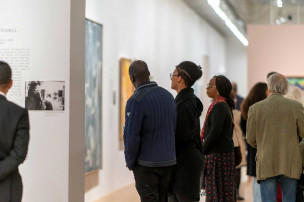The Good Immigrants: How the Yellow Peril Became the Model Minority
Avec Madeline Hsu, University of Texas, animée par Nancy L. Green, EHESS.
Écouter l'enregistrement de la conférence

L’immigration aux États-Unis a longtemps été perçue à travers le prisme du contrôle et des interdits posés à l’entrée sur le territoire américain de certaines catégories de migrants. Dans son ouvrage The Good immigrants, Madeline Hsu prend cette approche à revers, pour proposer une histoire des élites chinoises - intellectuels, entrepreneurs, étudiants - autorisées à immigrer aux États-Unis grâce à une politique d’exemption.
À travers un siècle d’immigration chinoise, Madeline Hsu montre sur quels critères cette politique était fondée : présenter les meilleures références, dans des professions en demande de main d’œuvre, et pouvoir ainsi contribuer à la compétitivité américaine.
À travers cette histoire, The Good Immigrants met en lumière le décalage qui a pu exister entre la loi et les représentations culturelles d’une minorité. Un décalage qui a permis à ces “bons immigrants” de rester aux États-Unis et d’apparaître, en fin de compte, comme des Américains exemplaires et productifs.
La conférence se déroulera en anglais.
---
Conventionally, US immigration history has been understood through the lens of restriction and those who have been barred from getting in. In contrast, The Good Immigrants considers immigration from the perspective of Chinese elites—intellectuals, businessmen, and students—who gained entrance because of immigration exemptions. Exploring a century of Chinese migrations, Madeline Hsu looks at how the model minority characteristics of many Asian Americans resulted from US policies that screened for those with the highest credentials in the most employable fields, enhancing American economic competitiveness.
The earliest US immigration restrictions targeted Chinese people but exempted students as well as individuals who might extend America’s influence in China. Western-educated Chinese such as Madame Chiang Kai-shek became symbols of the US impact on China, even as they patriotically advocated for China’s modernization. World War II and the rise of communism transformed Chinese students abroad into refugees, and the Cold War magnified the importance of their talent and training. As a result, Congress legislated piecemeal legal measures to enable Chinese of good standing with professional skills to become citizens. Pressures mounted to reform American discriminatory immigration laws, culminating with the 1965 Immigration Act.
Filled with narratives featuring such renowned Chinese immigrants as I. M. Pei, The Good Immigrants examines the shifts in immigration laws and perceptions of cultural traits that enabled Asians to remain in the United States as exemplary, productive Americans.
The lecture will be held in English.
Madeline Y. Hsu is associate professor of history and past director of the Center for Asian American Studies at the University of Texas at Austin. Her books include Dreaming of Gold, Dreaming of Home and the coedited anthology Chinese Americans and the Politics of Race and Culture.
Téléchargez la bibliographie autour de la conférence


